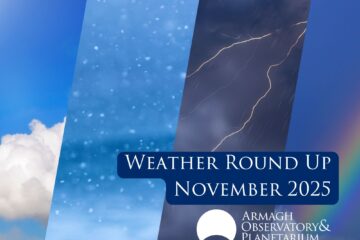“April is the kindest month. April gets you out of your head and out working in the garden.” – Marty Rubin, Author.
It is Springtime, and I’m sure we are all very glad to see the back of winter. With a shockingly cold start to March, here is hoping that in April, all we see are the faintest of April showers, and an increase in temperature.
With the spring equinox on 20th March, we are seeing a good stretch in the evenings. With more daylight comes the chance to enjoy the great outdoors, but also starts to make stargazing that bit more difficult. Make sure that when you head out with your binoculars or telescopes, you give your eyes plenty of time to adjust to the darkness. Beware of the light of your mobile phone! Any bright light will ruin all that time you’ve let your eyes adapt, and you’ll be back to square one. Red light is much better for stargazing, as it allows you to see, but also doesn’t ruin your night vision.
One thing we can never truly predict, especially here in Northern Ireland, is the weather. Do your research, ensure you know what the weather will be like on the evening that you want to go stargazing. Clouds are the worst when it comes to looking up at the stars, and here in our little country, we are plagued by them.
So, what will you be able to see when you look up into the sky this April? Here is my list of top things to search for. Some things you might need to use your binoculars or a telescope for, but most things you should be able to see with the naked eye:
The Pink Moon
The full moon of April will fall on 6th April and is known as the Pink Moon. Many of the names of the moon come from Native American tribes. The Pink Moon doesn’t refer to the colour of the moon, but instead marks the appearance of a pink flower called phlox subulata that blooms in spring. To some tribes it has also been known as the Sprouting Grass Moon, the Growing Moon, and the Egg Moon.
Lyrids Meteor Shower
In April every year, we get another chance to see the Lyrids meteor shower. Everyone loves a good meteor shower, so if you have the time, plan to see this one! Radiating from the constellation of Lyria, The Lyrids reach their peak in the early morning of 22nd – 23rd April, but you’ll be able to see the shower from 14th-30th April. This shower has a rate of roughly 18 meteors per hour, and with the New Moon occurring on 20th April, it means the sky will be dark enough to see these bright, fast meteors.
We get meteor showers from comets, and sometimes asteroids. The Lyrids are associated with Comet Thatcher, a long period comet with a orbit of 415 years. When comets get close to the Sun, they start to melt. The leftover debris hangs around in space and then the Earth passes through it. When this happens, the small comet debris enters the Earth’s atmosphere and burns up, resulting in a meteor shower.
Venus

Venus named after the Goddess of love, is a planet that would scorch and squash you at the same time. This image shows the planet with its cloud cover removed. (Image Credit: NASA/JPL)
That bright thing you’re seeing in the sky at night that looks like a super bright star? That’s the planet Venus, also known as the Morning, or in this case, the Evening Star.
Venus is one of our neighbours and is roughly the same size at the Earth. However, it spins on its axis in the wrong direction when compared to every other planet in the solar system! How odd! This means that on Venus, the Sun rises in the west and sets in the east.
Mercury
The closest planet to the Sun in our solar system, you’ll be in luck this month as Mercury will be at its greatest eastern elongation of 19.5 degrees from the Sun. This means that it will be at its highest point in the evening sky, just after sunset on 11th April. When it comes to stargazing and planet hunting, Mercury can often be illusive as normally it is chasing the Sun through the sky and is often only in the sky when the Sun is there too, making it very difficult to see. I don’t need to remind you all to never look directly at the Sun, and just be careful when hunting for Mercury, even when it is vising in the evening sky on 11th April.
Arcturus
If you want a specific star to look at in April, my suggestion would be Arcturus, found in the constellation of Boötes the Herdsman.

Boötes and the surrounding area of the sky, with the stars sized according to brightness, and the most prominent deep-sky objects marked. Credit: Stellarium/Rok Nežič
Arcturus is a fascinating star and is the brightest star in Boötes. It also ranks in the top five brightest stars in the night sky in general.
If you want to get technical, Arcturus is known as Alpha Boötis and has an apparent magnitude of –0.05. It is a single red giant star and is located approximately 36,7 lightyears away from Earth. It is an aging star, around 7 billion years old that has exhausted the hydrogen at its core and has evolved off its main sequence.






0 Comments